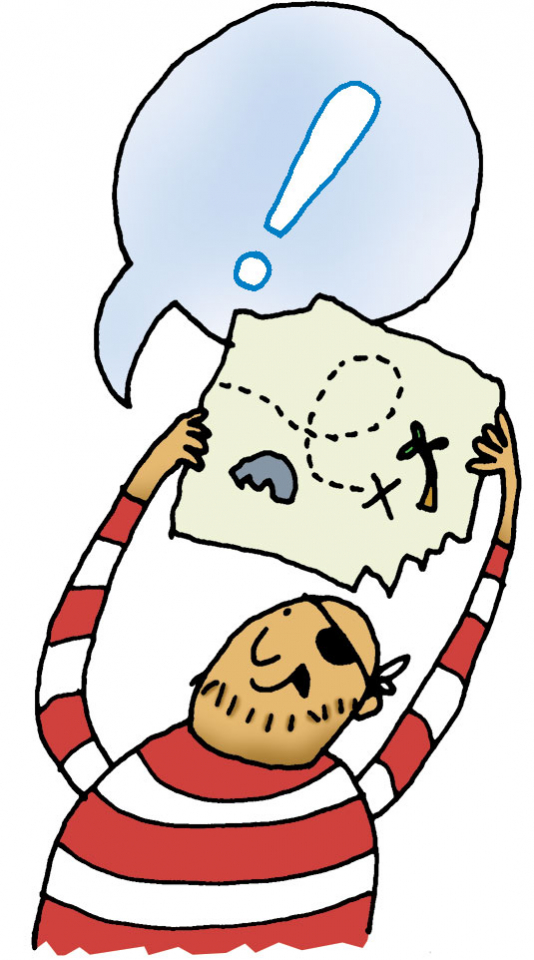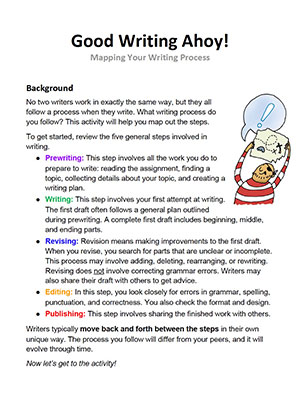
Good writing comes to life through a series of steps: prewriting, writing, revising, editing, and publishing. By teaching this process, you make writing more manageable for your students.
But even after you introduce the steps and strategies for applying them, some students may still view their own writing as a straightforward act that must be completed in one sitting.
You can dispel this misconception by having students map out their own unique writing method.
Featured Activity: Good Writing Ahoy!
In the lesson that follows, students create a flowchart of the actions they took to complete a recent writing task.
Available as a printable PDF or Google Doc, this activity builds awareness about the steps of writing and helps students uncover insights about their personal writing processes.

Teacher Support
Consider this support as you implement the lesson.
Downloads
Level
Grades 3-8
Learning Objectives
By completing this activity, students will . . .
- Create a flowchart of their writing process.
- Analyze the main steps of writing in the context of their own work.
- Reflect on their personal writing process.
- Identify ways to improve their process.
Teaching Tips
- Use the first page of the activity to define the five main steps of the writing process and introduce common actions involved in each step.
- Encourage students to share both common and uncommon actions they followed during their writing process. An uncommon action might be: “I took a break to play basketball.”
- Model the activity by mapping out the process you followed to write something.
- Reiterate that writers move back and forth through the steps of writing in unique ways: There is no single “correct” process.
- Students will likely question where certain actions fall within the overall steps of writing. For instance, you might get asked, “Does fixing a spelling error count as revising or editing?” Use these moments as opportunities to have broader discussions about the differences among the steps.
- Repeat the activity at various points of the year to track your students’ evolving writing habits and processes.
- As an alternative to a flowchart, let students illustrate their process in some other way.